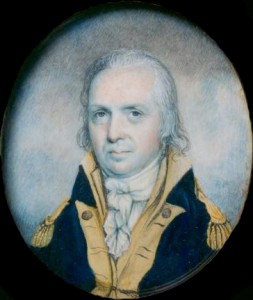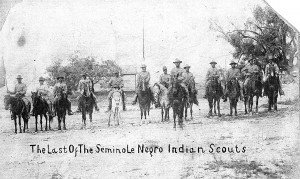Written By: Patrick Feng

With the outbreak of the Civil War in April 1861, beginning with Confederate forces firing on Fort Sumter in Charleston Harbor, the city of Washington, DC, the capital of the United States, was in a state of panic.
The State of Virginia had voted to secede from the Union not long after the surrender of Fort Sumter, which put the city’s security in jeopardy. Located in between two slave states, the capital was, in effect, surrounded by potential enemies.
The prospect of Confederate batteries occupying the heights of Arlington across the Potomac River from the city further underscored the need to address the defense of the capital from attack.
Except for Fort Washington, an old relic from the War of 1812 located several miles down the Potomac on the Maryland side of the river, Washington was virtually undefended.
On 24 May 1861, the date that Virginia’s vote of secession took effect, federal troops occupied the river port of Alexandria and its vital wharves, as well as the heights across the Potomac in Arlington, and began construction of several forts and other defensive works that would eventually evolve into the Defenses of Washington.
Originally built as temporary footholds, the construction of the defensive works accelerated as a result of the Confederate victories at First and Second Bull Run (First and Second Manassas) in July 1861 and August 1862. Eventually by the end of the war in 1865, 161 forts and batteries would be constructed in this system of defenses for the capital, making Washington the most heavily fortified city in the Western Hemisphere, if not the world.

One of the largest forts in the Defenses of Washington was Fort Ward in Alexandria, Virginia. Construction of Fort Ward began in July 1861 immediately after the Union defeat at First Bull Run. It was named Fort Ward in honor of CDR James Harmon Ward, the first Union naval officer to die in the Civil War.
Completed in September 1861, the fort had an initial perimeter of 540 yards and emplacements for twenty-four guns. After the Union defeat at Second Bull Run, federal troops expanded the perimeter to 818 yards, added another twelve gun emplacements, and expanded the quarters to accommodate a garrison of 1,200 men, although at any given time, only 300 to 400 soldiers were ever present in the fort.
By the time the Civil War ended in 1865, Fort Ward was the fifth largest fort in the defenses of the capital. MG John G. Barnard, Chief Engineer of the Defenses of Washington, considered Fort Ward to be one of the major forts in the defense system. Fort Ward’s role in the defense of Washington involved protecting the Leesburg Pike and the Little River Turnpike, which were vital supply links for Alexandria and to other federal troops stationed in the area. Built as a star fort structure, Fort Ward had bastions that would assure mutual fire support at different parts of the fort in case of a concentrated attack on a particular section.
The walls of the fort were constructed from compacted gravel and dirt, eventually reaching up to twenty-five feet high and up to fourteen feet thick. Surrounding the fort was a ditch or dry moat that supported the initial barrier of abatis, which were tree branches sharpened into stakes that pointed outward as an obstacle to an advancing foe. Once past the abatis, enemy troops would face the steep ditch which made them vulnerable to rifle fire from the parapets. Inside the fort, there were two bombproof shelters, each 200 feet long and 12.5 feet wide, along with a powder magazine that housed the black powder propelling charges for the guns, and a filling room where ammunition was stored.

Soldiers assigned to Fort Ward lived in barracks located in the rear of the fort. The officers’ quarters, mess hall, and other support buildings were also located in the rear. The rear bastion and its four strategically placed guns protected these buildings. In case of attack, the garrison would move into the fort and close the gate.
The fort’s main defensive elements were the northwest and southwest bastions. The northwest bastion was armed with two 24-pounder howitzers, three 4.5-inch ordnance rifles, and a six-pounder James rifle. This bastion guarded the approach to Alexandria along the Leesburg Turnpike.
This was supplemented by the north bastion, which also protected the outlying rifle trenches located near the fort. The southwest bastion, overlooking the Little River Turnpike approach to Alexandria, housed the fort’s largest cannon, a 100-pounder Parrott rifle, which had a maximum range of five miles.
This was also supported by the south bastion, whose guns protected the ditch along the walls of the southwest bastion. The large ceremonial gate that marked the entrance to the fort was erected by the Corps of Engineers in 1865.

The gate was adorned with a castle, the insignia of the U.S. Army Corps of Engineers, which designed and supervised the construction of the fort. Each of the gate’s columns were topped with a stand of cannon balls in tribute to the artillerymen who manned the fort from 1861 to 1865.
After the end of the Civil War in 1865, a majority of the defensive works around the capital, with the exception of a few forts, were dismantled and abandoned due to the expenses of upkeep. Most of them faded into obscurity.
Fort Ward itself was abandoned in December 1865 with most of its materials sold at auction. Having never been tested by a full-scale Confederate assault, the abandoned earthworks of the fort were battered by the elements. However, in 1961, the centennial of the beginning American Civil War, the City of Alexandria initiated the preservation of historic Fort Ward as a Civil War Centennial Project.

The fort’s northwest bastion was completely restored and the remaining earthen walls have been well preserved to show a major fortification in the Defenses of Washington, making Fort Ward the best preserved of the remaining Union forts in the area. Fort Ward was officially opened to the public on 30 May 1964 as the Fort Ward Museum and Historic Site.
Since that time, the museum has continued its efforts to maintain, conserve, and interpret a historic earthwork fortification. The museum has also grown over the years, amassing a collection of over 2,000 objects from the Civil War period, including artifacts related to Alexandria’s Civil War experience. At the core of its collection is approximately 600 items from Dr. Francis Lord, an author and well-known collector of Civil War arms and equipment. The museum also offers educational and, interpretive programs, tours, lectures, and reenactments throughout the year.





